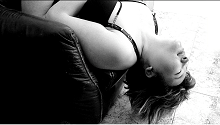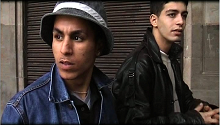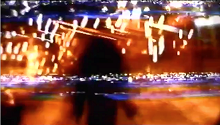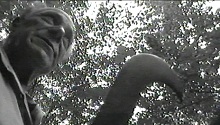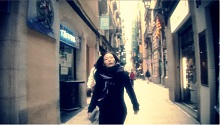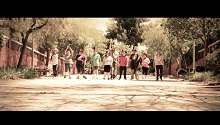Roger la Puente
Roger la Puente Duran, Barcelona 1977.
I make these videos with the complicity, friendship and personal relations of everyone who appears in them. I try to capture moments in time and the reactions of a biography when it comes into conflict with macro-history, context, the system, and its forms and deformations. The situations and themes are tied up with love that is technically illegal, human trafficking, the destruction of adolescent dreams, the layers of reality in the Raval district, and variations on tourism.
The images are constructed using a very immediate, direct way of filming, with an emphatic and sometimes exaggerated editing. Documentary voice-overs, unacted dialogues, fragments snatched from reality, a far cry from the objective approach or narrative linearity.
Bio
I specialised in Image when I studied Fine Arts and then went on to CiutatVellaTV and BTV, on the video art programme Boing Buddha.
Since 2000 I’ve been working as a freelance director and have made personal and commissioned works. I’ve worked mainly in Barcelona, and also in cities such as Montevideo, Caracas, Barranquilla, Hangzhou and Bissau, making documentaries and working as a cameraman or editor on different projects.
In 2010, I set up a production company with Magda Timoner, LaInterferència, making video clips, documentaries, and videos for museums, the performing arts and the occasion advert.
Personally, I’ve made docufiction works such as Waha (about two undocumented foreign national in the centre of Barcelona, first prize at Festivalito 2004), Ba-Sai-luo-na (Chinese lovers at Christmas in Barcelona) and, most recently, Have a Nice Day (a subjective portrait of a human trafficker), now at the distribution phase.
In recent years, I’ve worked in lots of participatory video workshops for elParlante, Mobiolak and El Mirador Cultural, many of them centring on adolescence and immigration. Soon to be released is a western made entirely with people with Down syndrome.
In the bustling editing night of Boing Buddha (Btv), since Roger Lapuente made his first appearance there, we awaited his works curiously. Waha, one of his first medium-length films, was a pioneer in the kind of docufiction that has since become common in Barcelona, with varying degrees of success. This film contains memorable scenes of overlapping reality and fiction that can only be achieved when you know exactly what you want and with the complicity of an entire film crew. His precocious ease in directing non-professional actors and making them believable reminded me of the skill of the early Harmony Korine, and his ability to anticipate with the camera what was about to happen staggered me. Back in Waha he revealed his taste for textures, for the skin of images, the electronic interferences of screens and videotapes.
A resident of Barcelona’s Raval district for over a decade, this bohemian with his elegant bearing and peaceful nature has witnessed the urban planning changes and gentrification that the district has undergone in recent years, and supported some of its neighbourhood protests: the violent closure of the district’s Ateneu Llibertari, the raids of the bars in the mythical Carrer de Robadors, etc. He has also documented at first hand the life of these streets with their motley, changing population, and done so bravely, beautifully and honestly. His work is a testimony to the inevitable disorder of large urban agglomerations, and their social and emotional underground life; to the beautiful sordidness of the globalized digital world it is our lot to inhabit, which forces the individual to reorganize individual images, disconnected fragments of different places and cultures, to create a mental home. People’s unequal possibilities of movement: the impossibility of crossing a border, a fence, a threshold, or the possibility of travelling for pleasure to the other side of the world in a question of hours are some of the absurdities of modern life portrayed in Lapuente’s work.
Images, writes Errol Morris, “function on so many different levels and mean so many different things to different people. Are they fine works of art? Are they documentary photographs? Can they be both? How much can a photographer interfere with a scene before it’s no longer a documentary photograph? Where is the line?” (Errol Morris, Believing is Seeing). The same thing happens with the moving image, and Lapuente knows how to give his films this meaningful ambiguity. Some of his works have something of what we used to call “live timelessness”, a magical effect so rarely achieved, and which we wanted for Gabinete de Crisis, a programme on which Lapuente also collaborated.
Roger Lapuente is like a 19th-century adventurer, and this character can be seen in his work. He has a contagious curiosity for the issues he addresses, for the places he visits, and a clear empathy with his sometimes abused characters. What makes him a cosmopolitan artist are not his trips and travels in Africa, China and Latin America, or the mysterious images from here and there that he captures and edits so well, but his very personal way of treating everyone the same, with the same ease and friendly courtesy, regardless of appearance, race, religion or background. This is how he achieves the commitment of his collaborators to his projects. Let’s hope we can soon see his latest work and, above all, that he gets to make many more of the standard to which we have become accustomed.
Félix Pérez-Hita (Video-artist and cultural critic)


